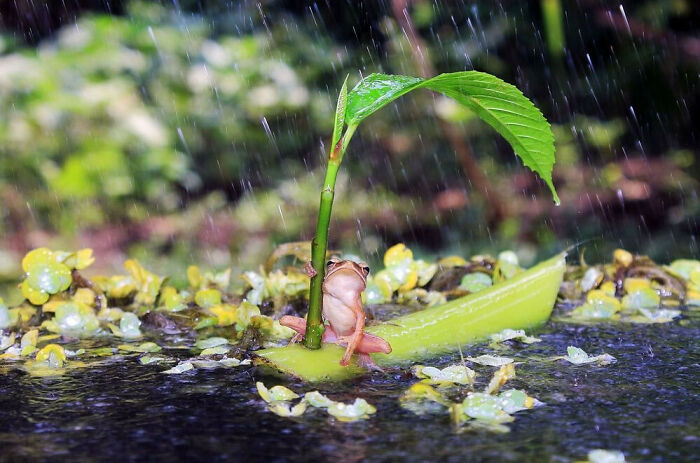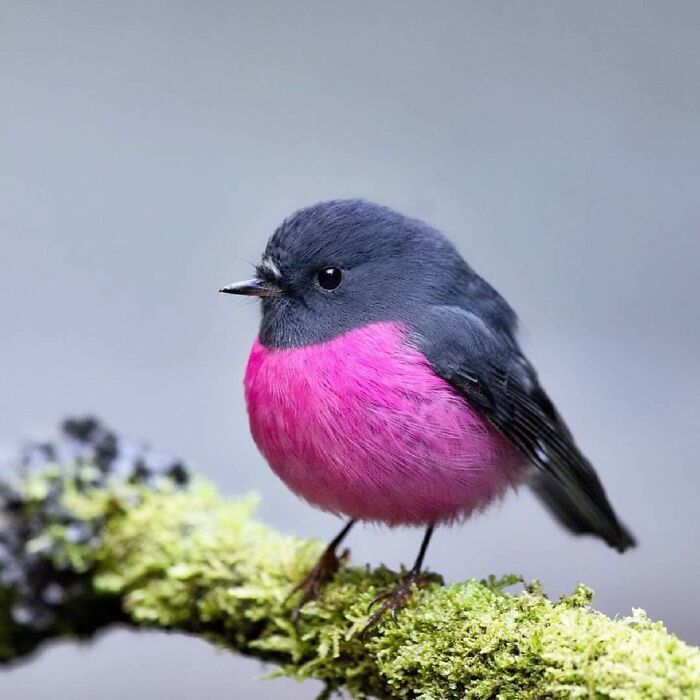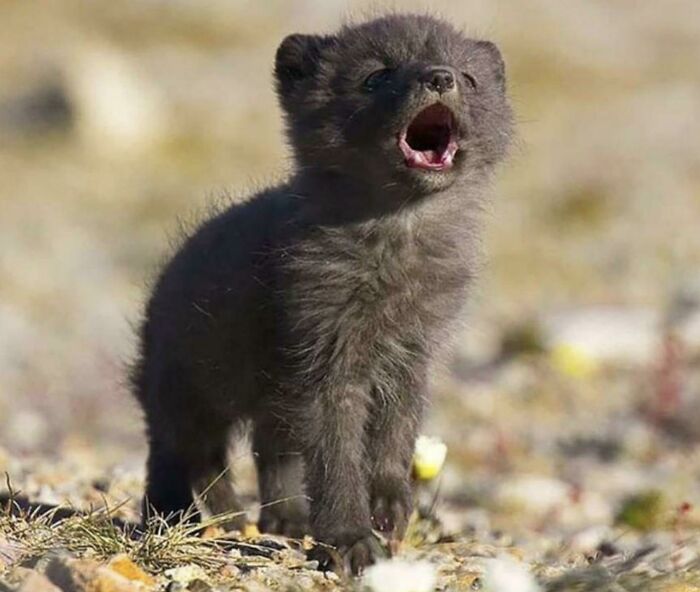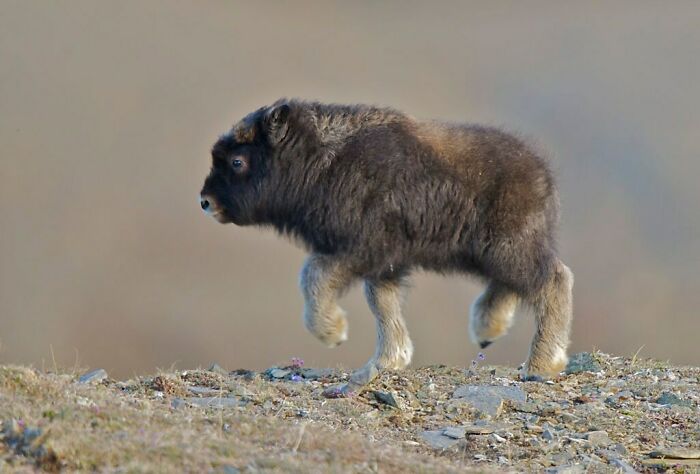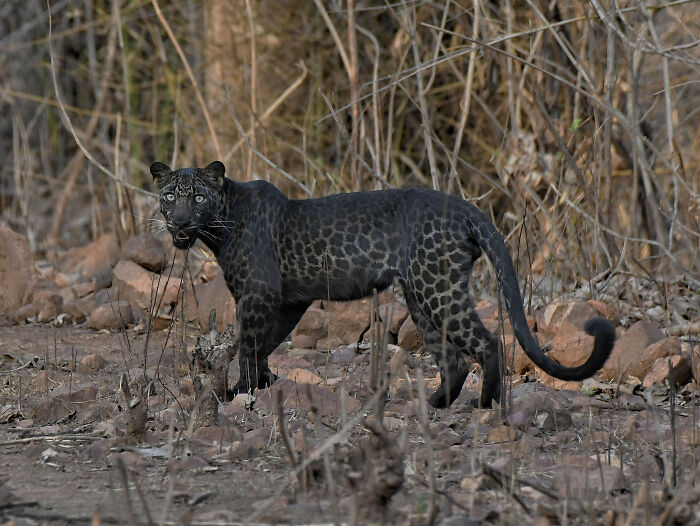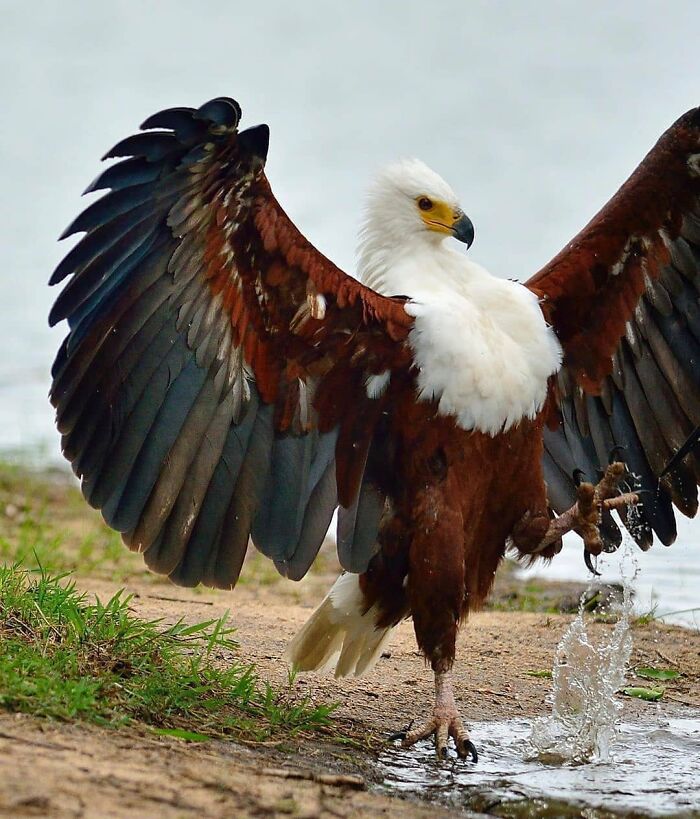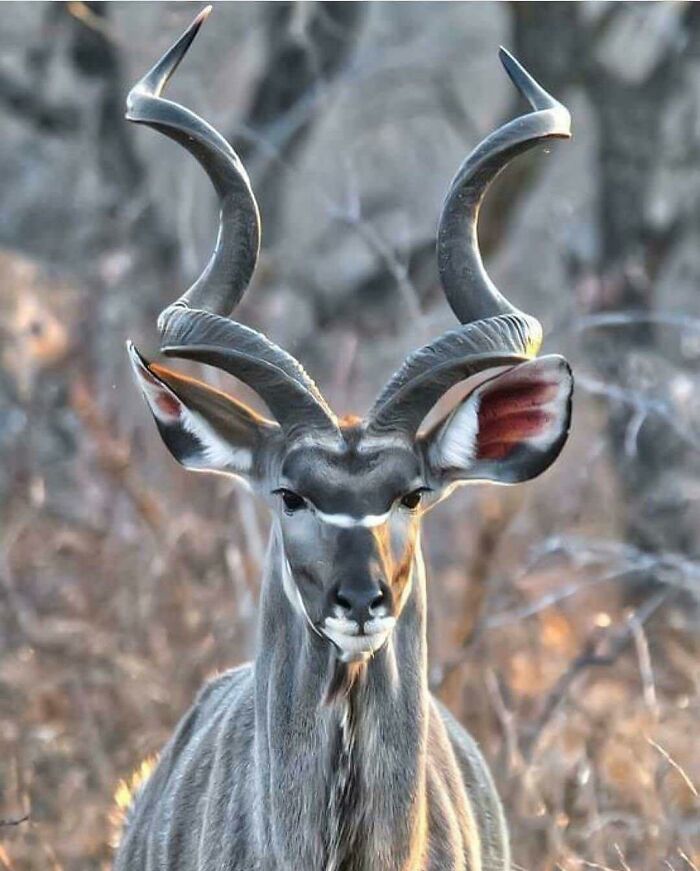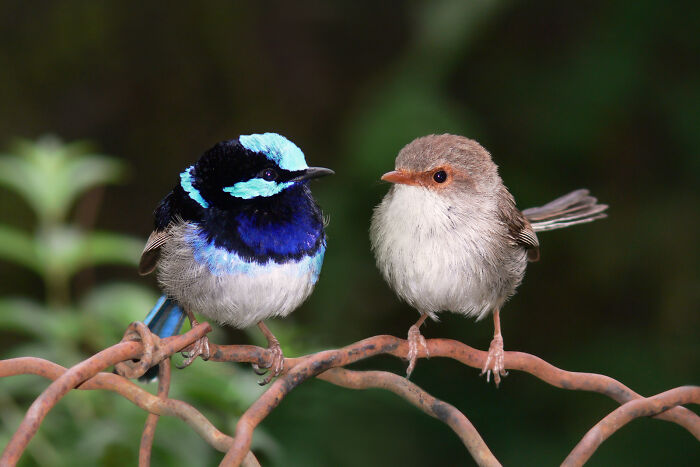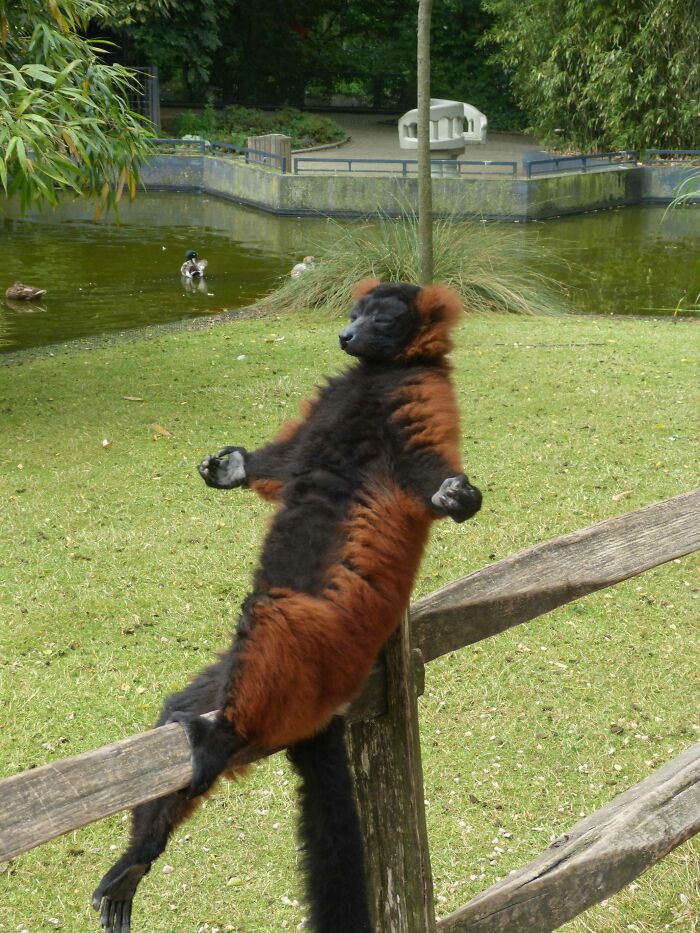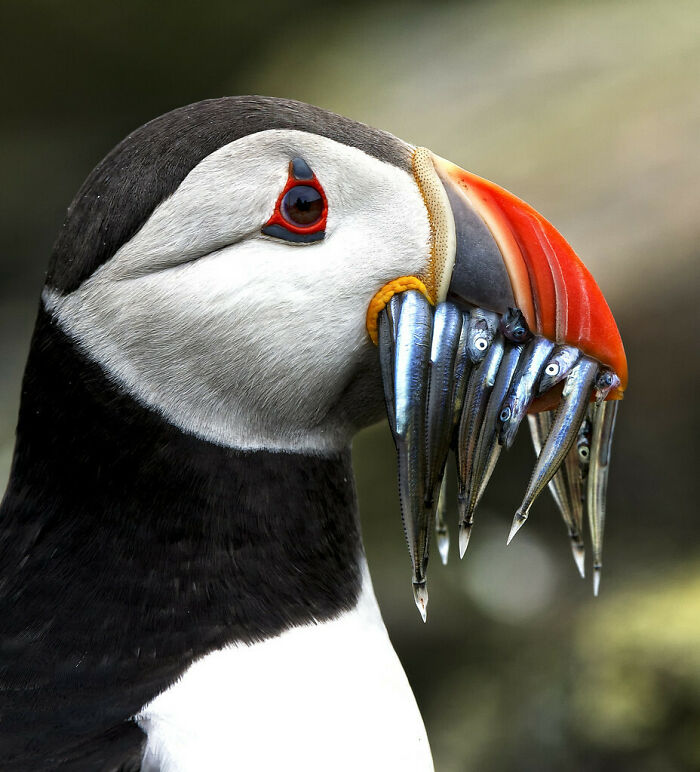No matter how much you love animals, it’s likely that you don’t get to encounter many in your day to day life. You might have a dog and cat to cuddle at home, greet some pigeons while going for a stroll and keep an eye on an adorable squirrel when you glance out the window at work. But if you’re interested in checking out some amazing photos of animals you probably don't see every day, you’ve come to the right place!We took a trip to this subreddit that’s dedicated to sharing stunning pics from the animal kingdom and gathered some of their most captivating shots below. Be sure to upvote the creatures you find most fascinating, and keep reading to find a conversation with wildlife photographer Ashley Barnard!
This post may include affiliate links.
Goodbye My Friend
We came across an elephant whose corpse was overcome by vultures and jackals. Another elephant approached. She chased away the predators and very slowly and with much empathy wrapped her trunk around the deceased elephant's tusk. She stayed several hours guarding her.
Mother Coyote Teaching Her Coyote Pups How To Howl
My dog and I ran into a coyote pup one time on a walk. He didn't have the howling down, just a goofy little bark. It was adorable.
Firework Turtle
According to the BBC’s Wildlife Magazine, it’s impossible to know exactly how many species there are on our planet, as scientists are constantly discovering new ones. But it’s estimated that there are currently at least 9 million different species calling Earth home. And if you’re an animal lover like me, you’re probably excited to learn as much as possible about what kinds of creatures are out there.
That’s why I love communities like this subreddit (whose name we have to censor). With over 404K members, this group aims to highlight the beauty and wonder of the animal kingdom. From photos of wolves looking like cute, cuddly creatures to high quality images of honeybees working hard, this community does a great job of showcasing the living, breathing wonders of the world.
Leopard Lazing Around
"Whatcha Doin' Lady?" A Professional Photographer Out In The Field Is Approached By Both A Wolf Cub And A Fawn
Circle (Giraffe)
To learn more about what it takes to capture high quality images of animals in the wild, we reached out to UK-based wildlife photographer Ashley Barnard, who was kind enough to have a chat with Bored Panda. First, we wanted to know how Ashley found his way to shooting animals.
“I was already a full-time photographer. I do a lot of weddings and commercial photography, however, I am a keen outdoor enthusiast,” he shared. “I've done a lot of mountaineering, ice climbing, etc. and love being outdoors. It was only when I first got my first large telephoto 600 millimeter lens that it dawned on me that I could perhaps start taking pictures of wildlife.”
Frog In The Water In A Boat
8 Ton Orca Jumping 15ft Out Of The Water
Just Before A Shark Breaks The Surface Tension Of The Water
“I started my journey going out to my local nature reserve and having a look at what I could find, not having a clue of what I was actually looking for or doing,” Ashley told Bored Panda. “It was a massive learning curve, and I'm still learning nearly two years on.”
“Finding myself sat in the field for 10 minutes two years ago was painful. With no wildlife around, I found myself clock-watching, and eventually giving up only to find that you have to sit in a field for not just one or two hours but maybe four or six hours,” he explained. “So patience has been a massive learning curve. Sit and wait, and eventually, the wildlife will come.”
Snow Leopard Mid-Leap
Purple And Black. What A Stunning Little Bird
Greater Blue-Eared Starling
We were also curious to find out what Ashley loves most about wildlife photography. “The best thing about photographing wildlife is being out in the outdoors in the middle of nowhere, on your own, camouflaged up, waiting for that one to one experience with the subject that you've gone out to photograph and find,” he shared.
“When you get that moment with the animal or bird, it is truly amazing. You've put in all that time and effort to go out and find the wildlife, then you are then rewarded with this experience that is hard to describe. Sometimes, you even forget to pick up the camera,” Ashley added.
Arctic Fox With Piercing Eyes. Iceland. Photo By Benjamin Hardman
A Rare Image Of A Flying Peacock
Lioness And Cubs Drinking
As far as the difficulties that come with shooting wildlife, Ashley says the biggest challenge is understanding your subject. “Approaching your subject, going into their environment, knowing your rights of way and where you cannot go, etc.,” he explained.
Another difficult aspect of wildlife photography is dressing appropriately. “You can't just go out in new jeans and a T-shirt and expect to photograph some deer or hares or otters,” the expert added. “You do need to be camouflaged up. Animals recognize you by your shape and by your skin color. It's amazing how white your face and hands look when stood in the middle of the forest, and that is what the animals pick up on, as well as your scent.”
Baby Giraffe
Wolf Pup
Cross Fox
We also asked Ashley if he has any favorite animals to photograph. “I don't think I particularly have one favorite animal. I think it's more about the adventure and the process behind capturing the image that makes the whole experience memorable,” he noted.
“I can look back at some of my favorite images, and I know how I took that image and what I had to put in to get it, which is why I like the photograph, not so much the actual animal or bird,” Ashley explained.
“I do have a few favorites, such as the mountain hair in Scotland, dippers and wagtails or various birds of prey, but there are still many animals that I wish to photograph,” he continued. “I think one of my biggest ambitions and goals is to go out and photograph the Arctic fox, but I will have to wait for that.”
Malaysian Large Frogmouth And Her Chick
Reinhardt And His Floofy Tail. He Is A Siberian Forest Cat
A Group Of Tadpoles Swimming
Finally, we asked Ashley if he could share some advice for amateur photographers looking to get great shots of animals. “Number one: patience. [And] make sure you have a lens with at least a 300 millimeter reach. It doesn't have to be great or expensive or the best. Practice your skill set, your composition, your approach and your research into finding the animals. Then you can look at upgrading your equipment.”
Look At This Baby Muskox
Mother Tiger Licking Her Cub
Elephants After A Swim
“Going round local nature reserves such as RSPB centers is always a good start, where you can meet fellow wildlife photographers and enthusiasts,” Ashley added. “And don't be afraid to ask what a particular animal or bird is. When I started, I didn't have a clue. I struggled with many, many birds, but it's all part of the fun and learning.”
And of course, if you’re looking for inspiration, be sure to visit Ashley’s website, YouTube or Instagram!
Black Leopard
The African Fish Eagle
Mother Bear And Cubs Drinking
We hope you’re enjoying seeing these amazing photos of animals, pandas! Keep upvoting all of your favorites, and feel free to share which animal you’d like to photograph in the comments below. Then, if you’re interested in checking out another Bored Panda article discussing wildlife photography, look no further than right here!
Lion Taking A Catnap
Blue-Footed Boobies
Kudu
Brown Panda
A Shining Sunbeam Hummingbird
Red Avadavat Or Strawberry Finch
Green Turaco
Vietnamese Mossy Frog
Snake In The Rain
Differences Between A Male And Female Mandarin Duck
Male And Female Superb Fairy-Wren
Giraffe And Leopard On A Misty Morning In The African Savanna, South Africa (Photo By Dylan Royal)
Meditating Lemur (Eulemur Rufus)
Harpy Eagle
The Cat After The Hunt
The Dik-Dik, A Very Small Gazelle That Stands About 12-16 In From The Ground
Australia Giant Cuttlefish
Puffin With A Mouthful Of Sand Eels
Moose (Alces Alces)
Do they all dispense water from their antlers? I learned a new thing today.

 Dark Mode
Dark Mode 

 No fees, cancel anytime
No fees, cancel anytime 














